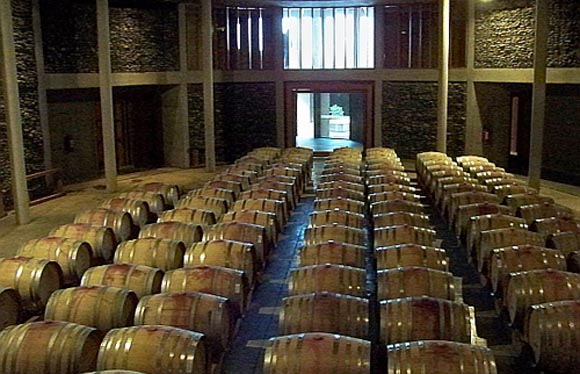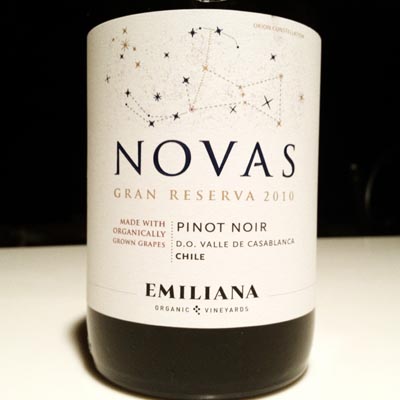For Organic Wine That’s Great, Hit the Chile Aisle
Let’s face it: organic wine has a bad rap. Most wine drinkers assume it’s going to be sub-par, just as they assume with kosher wine. In both cases, history plagues these wines. For a long time, it was next to impossible to find a bottle you would drink just because of the taste.

Organic Wine From Chile
Thankfully, organic wine is getting better all the time. If you pick up an organic bottle from Chile, or taste a glass in a wine bar, I can promise you’ll be pleasantly surprised. Thanks to ideal growing conditions (mountains on one side, the sea on the other), grapes grown in much of Chile don’t need a lot of pesticides anyway. Plus with land not being nearly as expensive as, say, Napa Valley, winemakers have been able to embrace the more expensive organic practices without sacrificing quality. Whereas organic wine from Oregon or California often comes with a premium price, the ones from Chile are in line with their non-organic counterparts.
I’ve tasted a variety of styles from three wineries in Chile, with impressive results. Two of them I visited in person while touring the wine valleys near Santiago: Matetic and Emiliana. The third, Visión produced my favorite out of five Savignon Blancs I sampled in a single tasting event – Cono Sur. All are putting out wines as good or better than those coming from vineyards using non-organic methods. You can drink these just because you like good wine: the eco-friendly part is a bonus.
Producing organic and biodynamic wine is not easy. Matetic and Emiliana both have herds of sheep roaming the grounds to chew up the grass and weeds between the vines and to provide natural fertilizer. The companies use solar energy and biofuels and are certified as carbon-neutral. (Visión, maker of Cono Sur, offsets all its carbon emissions as well.) Keeping the bugs away requires more labor, though Chile’s topography means fewer pests than in the U.S. or Europe.
 Matetic’s winery in the Rosario Valley employs a wide range of biodynamic principles, like being built into a hill to keep the temperature contstant and using gravity-fed hoses instead of pumps. In order to maintain diversity and give employees a stake in the business, Emiliana allows them to grow their own crops on company-owned land adjoining the vineyards (like olive trees for olive oil), with profits from these side projects going to the families directly.
Matetic’s winery in the Rosario Valley employs a wide range of biodynamic principles, like being built into a hill to keep the temperature contstant and using gravity-fed hoses instead of pumps. In order to maintain diversity and give employees a stake in the business, Emiliana allows them to grow their own crops on company-owned land adjoining the vineyards (like olive trees for olive oil), with profits from these side projects going to the families directly.
I was impressed by the results. Over and over in these wines I found a surprising level of complexity and variety. Emiliana’s red blend Coyam was heavenly with the ribs I was eating for lunch. The critics apparently agree: Coyam won a Best Wine in Chile award in its first vintage from the Wines of Chile Annual Awards.
Matetic has obtained scores above 90 in Wine Spectator, Wine Advocate, and Wine & Spirits.
Emiliana’s wine brands include Gê (the first certified biodynamic wine in Latin America), Coyam (the second), Novas, Natura (branded as Adobe in Chile), and Emiliana itself. Some are blends and the varietals include Syrah, Cabernet, Chardonnay, Savignon Blanc, Gewurztraminer, Pinot Noir, and Carmenere. The Natura Carmenere and Savignon Blanc ones I tried retail between $10 and $15 in the U.S. – a terrific value. Maybe that’s why this is the 3rd-largest Organic brand in the U.S. See more at the Emiliana website.
Matetic’s wine brands include EQ, Corralillo, and Matetic. Varietals include Syrah, Chardonney, Sauvignon Blanc, Gewurztraminer, and Pinot Noir. See more at Matetic.com.
I’ve only tried the Sauvignon Blanc Cono Sur, from the Visión winery. This ranks as one of the best $15 white wines I can remember having anywhere. It’s a softer, gentler version of the style, less bracing, more juicy. It’s the kind of mouth-watering wine that disappears before you know it as glasses get refilled. See more at the Cono Sur site.
To see more about all of Chile’s wine regions and wineries, see the Wines of Chile site.






